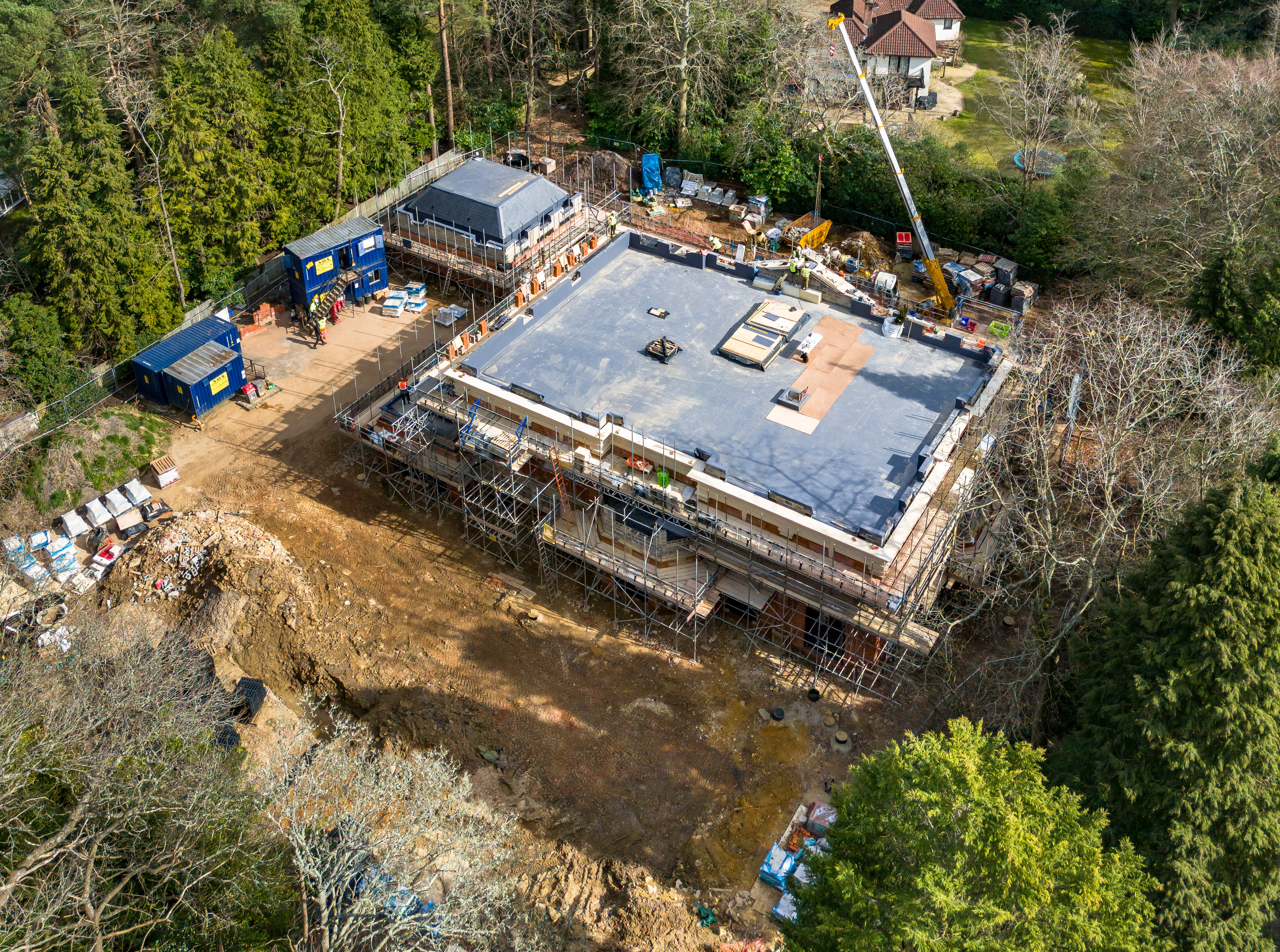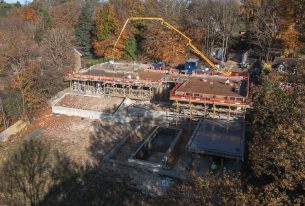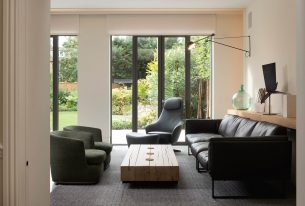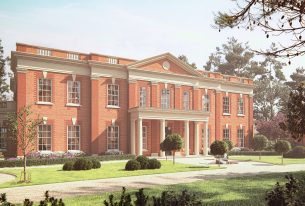


One of the privileges of working on the projects that we do is the opportunity to see trends emerging in architectural design as we move from project to project. Often, our involvement includes making buildability enhancements to ensure a smooth programme and lasting quality that delivers a luxury aesthetic and excellent performance for decades.
The experience we’ve accumulated across numerous exceptional properties helps inform future projects and ensures the client’s vision is realised to the highest standards.
With lifestyles changing following the pandemic, and home becoming more important to us than ever, there are three trends that we really love at the moment…
Garden rooms
Garden rooms are not a new concept but the value we place on our outdoor space and being closer to the natural environment has leapt during the pandemic. As a consequence, clients are keen to include a garden room in their home for a variety of reasons.
The ability to work from home has led to a boost in the number of garden rooms being used as an office space because this enables people to benefit from cutting out the commute while separating the worlds of home and work. Equally, however, garden rooms are sought after as lounge areas, entertaining spaces, bedrooms for semi-independent teens, guest accommodation, ‘granny flats’ or even the au pair’s quarters.
The multitude of uses is one of the many reasons why these structures are so popular, but it is important that the client considers the potential uses, aesthetics and practical design criteria required as part of the briefing process.
Aesthetic considerations involve what the garden room will look like from within the structure and within the garden, and also how it will appear from the house. Ideally it should have the visual impact of a garden sculpture and be harmonious with its surroundings. Attention needs to be paid to the aspect from the main house and the line of sight between the house and the garden room, particularly if the garden room is to be used as guest accommodation.
Bi-fold or sliding doors that enable the room to open out onto the garden make best use of the indoor/outdoor lifestyle potential, but it is important to consider the orientation of the structure because solar gain could lead to the garden room becoming uncomfortably warm on summer evenings, which is precisely when many homeowners might wish to use it for al fresco dining.
Selecting the right level and type of insulation is vital to creating a garden room that can be used all year round. A reversible heating system capable of providing both heating and cooling is ideal for this type of environment. Electric heating and cooling also reduces the amount of service connections required, which delivers cost, programme and minimised disruption benefits for the project. However, a cold water and sewer connection will still be required if the garden room is to include kitchen and/or bathroom facilities.
While off the shelf kit and modular garden rooms are available, the garden rooms we’re building are usually as unique as the main properties they serve. In London, the challenges of London clay mean that a lightweight timber frame is often the most appropriate choice, but this can be elevated to an aspirational aesthetic, such as the slatted Accoya-clad and glazed structure we have built at our project in Herne Hill. Here, to avoid the need for excavations and concrete foundations, we have used ground screws to support the structure, overcoming the difficulties of the soil, while delivering a garden room that is both substantial and stylish.
Of course, garden rooms do not always need to be standalone structures to provide accommodation that connects a living space to the outdoors. In Denmark Hill, for example, we have constructed a fair-faced concrete extension to the main house, which combines concrete, timber and glazing to tie together the materiality of the garden and the main property. Designed for use as an artist’s studio, this garden also features Accoya cladding and sits adjacent to a rill, created as part of a re-landscaping scheme that is integral to the project.
Timber cladding
Timber cladding is one of the materials we are routinely using to create garden rooms because it enables us to connect the structure to its surroundings, often amongst the trees in the garden. But it’s also a trend we love for other areas of bespoke homes; indoors and out.
Timber is amongst the world’s oldest and most enduring building materials and, over the centuries, we have found new and innovative ways to use it. Again, the pandemic has had an influence on the use of timber cladding indoors and out in bespoke homes, thanks to the focus on biophilia and connecting interior and exterior spaces.
Accoya is an excellent material for exterior cladding installations because it is hardwearing and low maintenance. Indoors, timber cladding on walls and ceilings can be used to deliver an on-trend mid-century vibe and provides a tactile finish with good acoustic absorption. At our recent project to refurbish a lateral apartment in Marylebone, for example, oak was used on ceilings to create variation in textures and a New York loft style aesthetic.
Careful setting out is essential for achieving the right look. Timber panels can be procured in a maximum of 3m sheets and there is considerable thought laying out the sheets so that the joins are not visible and to ensure the interfaces with other materials appears effortless. Integration with the lighting system maximises the impact of the design feature and on-site carpentry is vital to achieve the level of accuracy required.
Wine cellars
Spaces for entertaining have always been an important element of bespoke home design, and for the most aspirational kitchen and dining spaces with luxury features, a wine cellar is the ideal addition.
Our favourite approach to wine cellars at the moment is a spiral staircase, such as the one we’re installing at our project in West Sussex as part of a kitchen and cinema room entertainment suite. As the homeowner – or their guest – walks down the spiral staircase, the wine is kept in the circular wall of the stairway, delivering both a neat storage solution and a feature display of the homeowner’s wine collection within the kitchen/dining area.
The finish and wow factor are not the only considerations here. For clients with a passion for wine significant enough to warrant a wine cellar, keeping their collection stored in optimum conditions is essential. For our team, that means combining bespoke joinery with humidity and temperature control to create an environment that is both functional and aesthetically exciting.
Trends with substance
Whether a home is traditional, contemporary or quirky, our role is to ensure that it meets the client’s expectations in every detail and offers the exceptional standards of quality and finish required in the unique homes sector.









